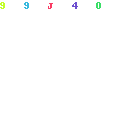In class we will see that a scale itself does not measure mass, but force. A pan balance actually compares the affects of gravity on similar masses. One way of making a force meter or scale was by using a spring. We could use an electronic scale.

We will perform a brief experiment where we measured the force of gravity on a one kilogram mass. This force was 9.8 Newtons. This gives rise to the equation
w=mg
where w is weight or the force of gravity, m is the mass in kilograms, and g is what we call the acceleration due to gravity or 9.8 m/s2. We will discuss the meaning of the term “acceleration” in this context in a few days.
We should note that in Imperial units where the mass is measured in slugs, and the force in pounds, the g will be 32 ft/s2.
At this point, we need to point out that mass is universal. No matter where you are in the universe, the mass and inertia will remain the same. However, the weight will change. g = 9.8 m/s2 (an average) only on the planet Earth, at sea level. On other planets the weight will be different. On the moon, the weight of an object is 1/6 of what it would be on the Earth. On Mars, it will be 40% of the Earth’s gravity. In fact, on a high mountain the strength of gravity actually decreases slightly.
In your physics class, we will will use the kilogram (kg) as the unit for mass. There are several different units for mass. The gram itself is also a common unit. In the Imperial system, the slug is the official unit of mass. However, the pound (lb) is commonly used interchangeably as a definition of both weight and mass. Although this only works as long as we are Earthbound at sea level.
2.2 pounds is the weight of 1 kilogram
9.8 Newtons is the weight of 1 kilogram
w = Fg = m·g gEarth = 9.8 m/s2 = 32 ft/s2
gmoon = 1.625 m/s2
gMars =3.728 m/s2
1 atomic mass unit = 1 amu= 1.67 x 10-27 kg
Returning to our definition of g = acceleration due to gravity term. This means, that if an object were in free fall, it would accelerate towards the Earth at 9.8 m/s/s. Free fall means there is no air resistance or other force.
EXAMPLE:
Take a dictionary with a mass of 3 kilograms. The mass of this book in grams will be 3000 g. The weight of the book in Newtons
w=m·g = 29.4 Newtons
We will save an in depth discussion of how to balance units for next week. The weight of the book in pounds will be 6.6 pounds. On the moon, the mass of this book will still be 3 kg. On the moon, its weight however will be 1.1 pounds or 4.9 Newtons.
